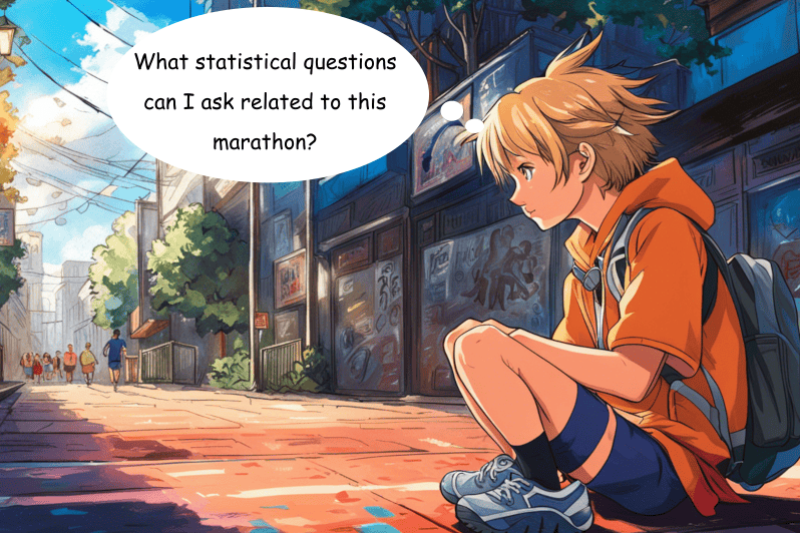
Table of Contents
Background
I noticed that even if my undergraduate students have finished their college degrees ending with a thesis, many of them still could not write statistical questions.
Writing a good statistical question is a challenge to many. I am convinced that one of the reasons for not being able to do so relates to the apparent disharmony between their knowledge of statistics and research subjects.
If you are one of those who find it challenging to frame statistical questions, then this article is for you. But before you attempt to write a statistical question, please read my article about variables.
A good understanding of the different types of variables as to measurement scale would help you frame the research questions correctly. You should be able to discriminate between the four types of variables, namely nominal, ordinal, interval, and ratio.
Now, if you are already well familiar with the different types of variables, continue reading.
What is a Statistical Question?
Let’s first define what we mean here by a statistical question. Defining the concept levels up our understanding of abstract terms that we often encounter while studying quantitative data analysis.
A statistical question is a question that is designed to be answered by collecting and analyzing data, with the expectation that the data will show variability rather than a single fixed response. Unlike a factual or deterministic question that has only one correct answer, a statistical question recognizes natural differences or fluctuations in the subject being studied and seeks to understand, describe, or explain patterns within that variability.
A statistical question is a question that is designed to be answered by collecting and analyzing data, with the expectation that the data will show variability rather than a single fixed response.
To answer it, one must gather information from a group, process or phenomenon, then apply statistical tools—such as measures of central tendency, variability, or probability—to summarize the data and draw meaningful conclusions.
Now, let’s proceed on how we can write good statistical questions that apply the concept we have just defined.
3 Tips on How to Write Good Statistical Questions
In writing the statistical questions, you need to bear in mind three things. These essential considerations are given below.
1. A Good Statistical Question Produces Data with Variability
A statistical question is one that requires the collection of data with expected variability in it. The data collected changes in value. You can quantify them.
If the data could not be measured, then you have to think it over again. Figure out how a phenomenon should be captured in such a way that the defining features are measurable.
If a phenomenon is quite complex, a quick search online in research databases will shorten the time you spend identifying the relevant variables. Or perhaps, a quick visit to your study site will help clarify the questions in your mind.
2. A Good Statistical Question is Not Readily Answered
A statistical question is not readily answered by a DEFINITE, DETERMINISTIC, or SINGLE answer. The expected response assumes VARIABILITY.
For example, a question like “How long does it take you to read this article?” is quite simple and quickly answered. You can switch on your cellphone’s stopwatch function, start reading, and then push stop once you are reading.

But if you ask, “How much time do you spend reading articles in one week?” This question requires you to note how much time you spend reading articles online. This time, the question is statistical as the number of minutes you spend in each instance you read articles vary.
3. The Answer to a Good Statistical Question Has a Distribution and Tendency
The answer to the question has a distribution and tendency. If the answer to the question has a distribution and tendency, then that is statistical.
Simply put, you cannot have a distribution or tendency if you only have one datum available. The data generated by the statistical question are numerical or assumes a range of numbers. You can compute for the mean, median, and mode for that answer. We call that in your undergraduate years as MEASURES OF CENTRAL TENDENCY.
Again, the data obtained from a statistical question can show the spread of the data. Is the data skewed or distributed towards the higher or lower portions of a scale? If it does, then the question posed is statistical.

You can compare different groups of data from each other using their distribution patterns and central tendency. In fact, when two groups of data are different from each other, you will see two distinct distribution patters if you plot one group against the other. That is, if you find that there is a significant difference between them in your computation of a t-test (parametric) or even a Mann Whitney U test (nonparametric).
Examples of Good Statistical Questions
The following examples illustrate how a good statistical question is written.
- On average, how long does it take a runner to finish a full marathon?
- Is there a correlation between the height and confidence level of fresh graduates applying for work?
- Is there a difference between internet-based and traditional assessment methods?
- Is there a difference between men and women in weight loss success?
- Is there a correlation between student academic performance and time spent online?
These questions are not quickly answered, require data collection that varies, and have distributions and tendencies. The examples follow all of the requirements of good statistical questions.
More examples here: Statistical Research Questions: Five Examples for Quantitative Analysis
© 2020 September 14 P. A. Regoniel | Updated 2025 August 22



